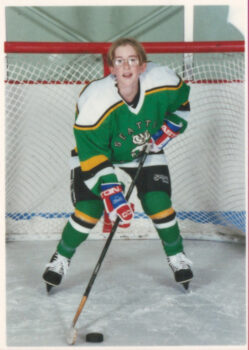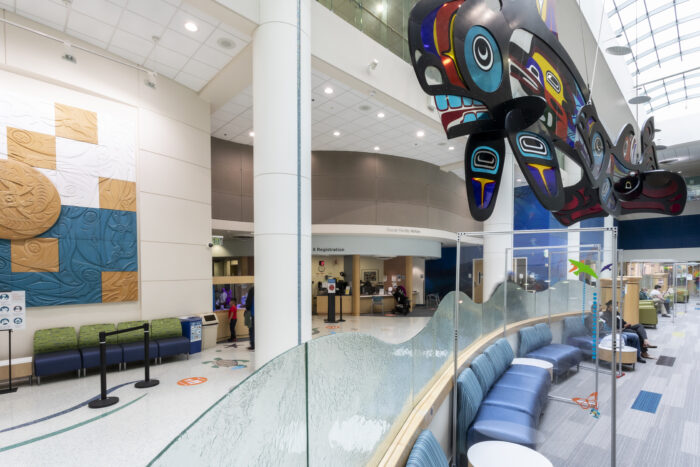PART FIVE: From witnessing exceptional care and compassion given to children in their own lives, to receiving treatment first-hand, this weekly series features Seattle Children’s employees and the life experiences that drove them to pursue careers in healthcare.

During a family vacation in 1993 at Lake Chelan, WA, 12-year-old Jesse Giordano started experiencing severe flu-like symptoms and extreme pain in his left arm.
“After a couple days holed up in the motel, my mom took me to an area emergency room,” Giordano said. “Other than confirming I had a fever, they told me to follow up with my primary care provider.”
That Monday morning, the family did just that. Giordano was given a blood test and then went home to wait for the results.
“We got a phone call later that day or early Tuesday directing us to Seattle Children’s immediately,” he recalled. “I was not super worried, but my mom was an absolute wreck.”
The family arrived at Seattle Children’s for the appointment in an area now called the Ocean zone.
At the appointment, doctors conducted a Magnetic Resonance Imaging (MRI) and found something concerning.
The MRI scan makes detailed pictures that provide a multidimensional look at a body part to help the doctor see healthy and diseased tissue without X-rays or surgery.

“There appeared to be a tumor the size of a golf ball in my left shoulder socket,” Giordano explained.
Former physician, Dr. Ernest ‘Chappie’ Conrad, advised the family that although he believed that the tumor was likely benign, it was important get it removed.
“I asked him if I was going to die and instead of saying ‘no,’ he said something like, ‘probably not,’ which I appreciated,” Giordano distinctly recalled.
The following day, Giordano was scheduled to have surgery. During the procedure, doctors were able to identify that the cause was a severe staph infection, rather than a tumor.
“The surgeons cleaned it out, installed a Peripherally Inserted Central Catheter (PICC) Line and put me on antibiotics for 45 days,” he said.
A PICC is a type of central line that delivers medicine and fluids through a small tube into a large vein near a child’s heart.
“Ultimately, I was fine, however I lost about 25% of my body weight,” Giordano explained. “We also never figured out how I got the staph infection, but the doctor’s best guess was that it may have come from a cut in my mouth due to my braces.”
Three months after the surgery and treatment, he was cleared to participate in sports again and was back on the ice playing hockey.
Giordano’s experience is something he thinks about often, especially now as a member of the Seattle Children’s’ Real Estate and Property Operations workforce.
“When I first landed my job at Seattle Children’s, I sent an email to Dr. Conrad to say thank you,” he said.
Giordano is proud to be part of an organization that is providing hope, care and cures to help children live the healthiest and most fulfilling life possible.
“I see kids and parents going through that same scary week of not knowing what is going to happen,” he explained. “I hope their experience turns out as well as mine did.”
Resources:
- ‘The Fight of My Life’ | Finding a Lifelong Passion After Battling Childhood Cancer (seattlechildrens.org)
- How Johanna’s Unique Experience Drove Her to Healthcare (seattlechildrens.org)
- I Know What it Feels Like’ | Meagan’s Journey – On the Pulse (seattlechildrens.org)
- ‘Cancer Doesn’t Always Win’ | Sofia’s Personal Connection to “Hope. Care. Cure.” (seattlechildrens.org)
- Careers – Seattle Children’s (seattlechildrens.org)

